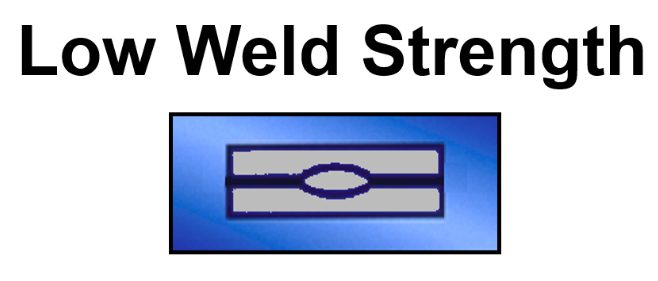Low weld strength can be caused by anything which retards weld nugget growth or formation. It can also be caused by the condition of the materials being welded.

Items that must be considered are:
Short Weld Times - There is not enough time for the nugget to grow or even form.
Low Weld Force – Force helps contain the molten nugget as it forms and it also acts as a forging hammer to strengthen the weld as the weld is cooling by delivering forging action. A second issue with low force is that the heat will tend to be on the surface of the part rather than the weld interface. The nugget may expel and forging action will be inadequate.
Low Weld Current – The welding current could also be inadequate to generate sufficient heat at the weld interface.
Small Electrode Face Area – It is very difficult to grow a nugget larger than the electrode face size. If the electrode face is small this limits nugget size and in turn strength.
Poor Heat Balance – If improper low force is applied as mentioned above this will cause excessive heat generation on the two outside surfaces relative to the desired weld interface. Other factors that change the heat balance are differences in material thicknesses or different materials and electrode face size and material differences.
Welds Too Close Together – If welds are too close together the second weld will lose some of it’s current through the first weld. This is called shunted current. In this circumstance the second weld will be welding with less current through the desired weld nugget area. To prevent this increase the spacing. Published weld schedules usually give these minimum spacings.
Other factors which could be present but are not as prevalent are
short weld time, large electrode face area, high conductivity electrode material, dirty- scaley material, poor fit up, insufficient edge distance, metallurgy of the work piece and high weld force.
Reference: CMW Resistance Welding Products Catalog
RWMA - Resistance Welding Manual 4th Edition

